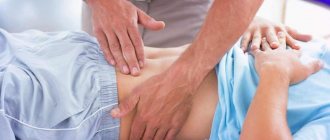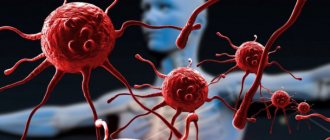Published: 06/22/2021 11:30:00 Updated: 06/22/2021
Prostatitis is an inflammation of the prostate gland, one of the common problems in 40% of middle-aged and older men [5]. Without directly threatening life, this disease leads to a significant decrease in its quality, affecting performance, the intimate sphere, limiting freedom and provoking everyday difficulties and psychological disorders.
Prostatitis occurs in acute or chronic form and can be of infectious or non-infectious origin.
What is chronic prostatitis
In ICD-10 (International Classification of Diseases, 10th revision) there is no such disease as “chronic prostatitis”. There is also no single, generally accepted characteristic of this pathology. In urological practice, it is customary to use the classification developed by the AHI (American Institute of Health). It defines categories of prostate diseases. Those that can be described as “chronic” include:
- chronic bacterial prostatitis;
- chronic abacterial prostatitis.
To make these diagnoses, the following symptoms are required: long-term (at least 3 months) pain in the perineal area. Thus, chronic prostatitis can be called a long-term inflammatory process, the consequence of which is changes in the structure of the prostate gland and its dysfunction. But other prostate diseases also lead to such sad results. Therefore, the diagnosis of chronic prostatitis is difficult.
Features of the structure and functions of the prostate gland - why this organ is called the second heart
The anatomical relationship of the male reproductive system, the outflow of sperm and urine is due to the origin of most of these structures from a common rudiment - the endorenal duct. From it the epididymal ducts, vas deferens, ejaculatory ducts, seminal vesicles, ureters, and prostatic urethra are formed. Only the prostate gland and testes originate from other points. The prostate forms in the form of numerous vesicles from the posterior urethra, which develops from the urogenital sinus.
The prostate has the shape of a chestnut and, surrounding the urethra at the base of the bladder, lies on the urogenital diaphragm. The gland, covered on the outside with a thick connective tissue sac, is a tubular-alveolar organ with numerous smooth muscle fibers.
Anatomically, the organ is divided into right and left lobes, and clinically there are two lateral lobes and one middle lobe. The prostate is vascularized by branches of the inferior arteries of the bladder, the arteries of the internal genital organs and the inferior rectal arteries. Innervation comes from the fibers of the autonomic system from the pelvic plexus.
Pancreatic secretion makes up 15% of the sperm composition. The secretion contains a number of active enzymes with highly active proteolytic factors such as fibrinolysin and fibrinogenase. Prostate secretion components also include diastase, β-glucuronidase, fructose, transaminases and amino acids. The prostate is the main producer of citric acid and acid phosphatase in human sperm. The secretions also contain spermine and spermidine and an antimicrobial zinc-containing polypeptide. Immunoglobulins are synthesized locally.
The main task of the prostate gland and seminal vesicles, like Cooper's glands, is to create seminal fluid along with the secretion of the testicle and epididymis. It provides transportation and protects the metabolism and motor activity of sperm.
The mixing of these ingredients occurs during ejaculation. The first portion of ejaculate, which does not coagulate or liquefy immediately, contains products of the Cooper and prostate glands. The last part of the ejaculate liquefies very slowly, about 15-20 minutes, and contains products of the seminal vesicles, including fructose. The first fraction includes activators of lysozyme, alpha-amylase, spermine and plasminogen.
Seminal protein concentration is half that in plasma and is 4.0 grams%. This is mainly albumin, the level of which is 140 milligrams% of the quantitative ratio of the secretion of the prostate gland to the secretion of the seminal vesicles. Besides proteins and enzymes, there are also their coenzymes, which are metals such as zinc, magnesium, calcium and selenium.
Systemic humoral influence is mediated by cellular receptors specific for testosterone, FSH and LH. In the most general form, they set the pace and direction of many biological reactions.
Epidemiology
Prostatitis is one of the most common diseases in men. It has a significant impact on performance and family relationships. The quality of life of patients decreases to the same extent as in people who have had a heart attack or suffer from angina pectoris.
According to data from various sources, every 3rd or 4th man is diagnosed with prostatitis. And most often this is not the initial or acute stage of the disease, but an already formed and long-term process - chronic.
Not so long ago, it was generally accepted that this pathology is characteristic mainly of older men. But statistical data refuted this opinion. Today it is known that chronic prostatitis is a disease of men of childbearing age who are sexually active.
More than 30% of patients consult a specialist with complaints characteristic of chronic prostatitis. Often, at the time of a visit to the doctor, the disease is complicated by concomitant pathologies: erectile dysfunction, vesiculitis, primary or secondary infertility, epididymitis.
Possible complications
During inflammatory processes in the prostate gland, neighboring organs are also involved in the pathological process. This can cause various consequences of prostatitis, for example:
- vesiculitis;
- posterior urethritis or colliculitis;
- abscess of the gland itself;
- sclerosis or fibrosis of the prostate;
- prostate cysts and stones;
- infertility;
- ejaculation disorder;
- erectile dysfunction.
To prevent the development of these serious complications, at the first symptoms of prostatitis and prostate adenoma, you should consult a urologist.
Causes of chronic prostatitis
The causes of chronic prostatitis are very different. Of the variety of negative factors affecting a man’s health, it is difficult to single out exactly those that provoked the development of the disease. Often this is a complex of situations and circumstances accompanying a man’s life.
The main causes of chronic abacterial prostatitis are the following:
- dysrhythmia (irregularity) of sexual intercourse;
- physical inactivity, which is typical for overweight people;
- hypothermia;
- intraprostatic reflux;
- long-term stressful conditions;
- bad habits;
- the predominance of foods rich in fat in the diet;
- chronic fatigue;
- negative impact on the body in hazardous industries.
Chronic prostatitis of the bacterial type is the result of incompletely cured bacterial prostatitis. Or the man ignored the ailments and did not seek help from a urologist. Therefore, no treatment was carried out.
Chronic prostatitis of the abacterial type develops due to exposure to infectious agents against the background of decreased immunity. As a rule, such patients are diagnosed with diseases of the endocrine system.
Factors that provoke the development of chronic bacterial prostatitis are:
- surgical operations on the prostate (if antibacterial therapy was not performed before the operation);
- refusal to use contraception;
- lack of habit of keeping your body clean.
Preventive measures
Chronic prostatitis usually does not develop if a man leads a healthy lifestyle: watches his diet, exercises, etc. Prevention of prostatitis is facilitated by giving up bad habits and casual sexual intercourse.
There are primary, aimed at preventing the occurrence of the disease, prevention, and secondary, the task of which is to prevent relapse (exacerbation) of existing chronic prostatitis.
Primary prevention comes down to regular sexual intercourse, a balanced diet, adherence to a physical activity regimen, timely and complete treatment of any infectious (purulent) diseases of the body and timely sanitation of the oral cavity.
Secondary prevention involves regular examination by a urologist and preventive treatment - multivitamins, restorative drugs, exercise.
as a medicine to prevent prostate diseases.
Symptoms of chronic prostatitis
Today there are many myths regarding chronic prostatitis. For this reason, any temporary disturbances in sexual function are attributed to this disease. You can often hear the opinion that decreased libido and erectile dysfunction are due to prostatitis, and if an older man, then to chronic prostatitis.
This is not true, since sexual dysfunction has many other causes, and the main symptom of chronic prostatitis is pain. All other signs can be considered concomitant and indirect.
Chronic prostatitis is often confused with pelvic pain syndrome, since the symptoms of these diseases are largely similar. This is due to the formation of myosfacial trigger zones near the prostate, which appear as a result of injuries and surgical interventions. Pain in these areas can be mistaken for a symptom of prostate inflammation.
- In the diagnosis of the disease, complaints of pain and discomfort in the perineum and pelvis, lasting at least 3 months, come to the fore. The pain is localized near the prostate, radiating to the sacrum, rectum, and scrotum. With prolonged exposure to negative factors (carrying heavy objects, excessive physical activity, being on your feet for a long time), the pain intensifies.
- A characteristic sign of the disease is premature ejaculation. Patients experience decreased sexual desire and erectile dysfunction. These symptoms are also characteristic of other genitourinary diseases. Therefore, it cannot be said that they are hallmarks of chronic prostate disease.
- An important symptom is the fading of orgasm. If the patient begins to notice that the severity of sensations during ejaculation has disappeared, this is a reason for a more attentive attitude to his health and a signal about the need to visit a urologist.
- The structure of the inflamed prostate becomes denser, the pressure on the urinary tube increases, and the quality of urination deteriorates. Patients with chronic prostatitis note a frequent urge to urinate at night. The process of urine excretion is accompanied by a burning sensation, stinging, and pain. Urinary incontinence often occurs.
Signs of chronic prostatitis can be expressed in full or partially. Much depends on the patient’s health status and the presence or absence of other diseases. Chronic prostatitis is characterized by a wave-like course, with waxing and waning symptoms. With this disease, the inflammatory process is not acute.
Forms of the disease
Before moving on to a description of symptoms and manifestations, it is necessary to classify the forms of inflammatory processes, based on WHO recommendations. Thus, the following forms of prostate inflammation are distinguished:
- Primary acute inflammatory process without specifying a specific etiological factor - corresponds to the previously used term “acute prostatitis”;
- Primary chronic or chronic in the outcome of the acute form of the inflammatory process, with a direct etiological connection with bacteria;
- Minimal inflammatory phenomena as part of the clinic of chronic pelvic pain syndrome;
- Self-presented subacute and chronic pelvic pain and dysfunction without clinical signs of inflammation;
- Laboratory manifestations, in the absence of complaints, in the form of bacteriuria or leukocyturia with a confirmed absence of diseases of other organs of the genitourinary system;
- Granulomatous prostatitis with outcome in fibrosis or primary fibrosis of the prostate gland;
- A combination of inflammatory phenomena of the prostate gland with any other pathology of the prostate, without indicating the primary or secondary nature of the inflammatory process. In this case, the combination is most often observed with benign hyperplasia and oncological processes.
Diagnosis of chronic prostatitis
In the presence of pronounced symptoms, it is not difficult to diagnose chronic prostatitis. But this disease is often asymptomatic, which complicates its detection. For diagnostic purposes, a whole range of studies is carried out.
The Association of Urologists has developed questionnaires that can help identify asymptomatic chronic prostatitis. The questions are formulated in such a way that the patient’s subjective feelings can be clarified. Not every man is able to give a correct assessment of his erectile function, the quality of orgasm and other details of sexual life. Questionnaires filled out by the patient provide the specialist with the information necessary to make a diagnosis. In urological practice, the NIH-CPS scale is most often used.
In order to differentiate chronic prostatitis from other diseases, a neurological examination is performed. The list of diagnostic methods used includes clarification of the patient’s immunity status.
Where is prostate inflammation treated in St. Petersburg?
It’s not for nothing that the prostate is called “the second male heart.” It is necessary to carefully take care of the health of this organ, because sexual function, the ability to have offspring and live a full life depend on its condition.
This disease can be treated quickly and effectively if the patient consults a urologist at the first signs of prostatitis. The disease can be detected at an early stage during a routine preventive examination. Urologists from the Diana urologist-gynecology clinic in St. Petersburg invite all men to be examined.
Laboratory research methods
If chronic prostatitis is suspected, first of all they find out what its nature is: bacterial or abacterial. In the first case, it is necessary to identify the pathogen or pathogens and find out which drugs they are sensitive to. To do this, laboratory tests of urine and prostate secretions are performed.
If, after a 10-day period after the DRE, the PSA test shows that the level of prostate-specific antigen exceeds 4.0 ng/ml, this is a reason to refer the patient for a biopsy in order to exclude an oncological process.
The following research methods are recommended:
- scraping from the urethra;
- general and biochemical urine analysis;
- LHC urine culture;
- LHC culture of prostate secretion.
Instrumental research methods
TRUS (transrectal ultrasound) is performed using equipment equipped with an instrument that is inserted into the patient's rectum. If a hypoechoic area of irregular shape is detected, there is every reason to suspect a malignant neoplasm. With chronic prostatitis, scarring, compaction of the structure of glandular tissue, and changes in the seminal vesicles may be observed.
UDI is the main method of functional diagnostics. It allows you to find out the nature of urination, signs of stagnation of urine, and its composition. The study includes several tests: uroflowmetry, cystometry, measurement of residual urine volume, assessment of pressure inside the bladder and urine outflow rate.
Tomography (computed or magnetic resonance imaging) is necessary to exclude benign and malignant neoplasms. These research methods are highly informative and help assess the condition of prostate tissue.
Treatment of chronic prostatitis
Treatment of chronic prostatitis requires an integrated approach. Taking medication alone is not enough. Physiotherapeutic procedures and therapeutic exercises are necessary. In general, chronic prostatitis is difficult to treat and requires a radical revision of lifestyle, changes in habits, and in some cases, a change of job. Urologists insist that only a set of measures will help get rid of this disease completely or ensure long-term remission.
Regardless of whether the disease is bacterial or abacterial in nature, congestion in the prostate played a major role in its formation. The viscous secretion deposited in the ducts of the gland is a favorable environment for the development of pathogenic and opportunistic microorganisms. Therefore, the main attention should be directed to eliminating stagnation.
The issue can be solved by changing lifestyle and including physical therapy classes in the daily schedule.
Complexes of exercises have been developed that are suitable for different life situations:
- for those men who are forced to sit most of the time (drivers, office workers, managers);
- for people with excess body weight;
- for those who do not have time to do exercises.
Having thought about how to treat chronic prostatitis, you need to decide to seriously reconsider your attitude towards your health.
Recommendations for outpatient treatment
- The patient must avoid situations in which he may suffer injuries to the pelvic organs.
- It is necessary to avoid any stress on the prostate: do not ride a bicycle, do not do strength exercises, do not carry weights.
- If the work is sedentary, every 2-3 hours you need to do warm-ups by doing squats, leg swings, and running in place.
- You need to try to normalize your sex life, which is extremely important to eliminate stagnation of secretions in the prostate.
- It is recommended to limit alcohol consumption to minimal doses or completely eliminate alcohol consumption.
Treatment with medications
For chronic prostatitis, outpatient treatment is mainly carried out. If the pathological process persists and it is not possible to achieve remission using this method, hospitalization is recommended. In a hospital, under the supervision of medical staff, there are much more opportunities for compliance with the regime and monitoring changes in the patient’s condition.
Chronic prostatitis in men develops against the background of endocrine disorders. In this regard, drugs 5-alpha reductase inhibitors and alpha 1-blockers are recommended. They help normalize hormonal levels and eliminate the symptoms of pathology. For these purposes, drugs such as Finasteride and Terazosin are prescribed.
An integrated approach includes taking medications such as:
- immunosuppressants;
- citrates;
- cytokine inhibitors.
Treatment methods for bacterial chronic prostatitis
Bacterial chronic prostatitis is treated with antibiotics. The most effective drug for a particular patient is determined using a preliminary laboratory study of prostate secretions.
There is no universal medicine to suppress and destroy pathogenic microflora. What helps one patient may not help another. For this reason, there are many negative reviews about advertised medications for the treatment of chronic prostatitis.
The drugs recommended for antibacterial therapy are fluoroquinolones. Most bacteria are sensitive to them.
The standard technique includes taking the following medications:
- “Norfloxacin” – 400 mg 2 times a day for 14 days;
- “Ciprofloxacin” – up to 500 mg per day for 4 weeks;
- Pefloxacin – 400 mg 2 times a day for 14 days.
Antibiotics can also be included in the treatment plan for patients with abacterial prostatitis. This therapy is carried out for preventive purposes. According to indications, treatment with penicillin drugs is included. Standard - Amoxiclav and Clindamycin.
- If bacteriological examination of prostate secretions reveals chlamydia, Doxycycline is prescribed. After completion of antibacterial therapy, treatment with hormonal drugs begins.
- For intraprostatic reflux, it is necessary to take a-blockers: Terazosin, Tamsulosin, Alfuzosin.
- For pain syndrome, Diclofenac 50-100 mg per day is effective.
- For hypersensitivity of the bladder neck - Amitripcilline.
Treatment with herbal remedies
Many people doubt whether chronic prostatitis can be cured with the help of herbal remedies. The answer to this question was obtained through many years of use of these healing agents in urological practice.
Today the following treatment complexes are recommended:
- "Likoprofit";
- "Prostamol UNO";
- "Speman";
- "Pumpkin."
All these drugs have a beneficial effect on the functioning of the male genitourinary system. Effective treatment of chronic prostatitis is possible provided that urinary function is normalized. The components included in herbal medicines perform this task. They help reduce the frequency of urges and eliminate sluggish stream syndrome.
For patients with chronic prostatitis, herbal mixtures containing pumpkin extract or pumpkin seeds are recommended. The latter have a unique chemical composition and act in three directions at once:
- normalize metabolism;
- strengthen the walls of blood vessels;
- activate blood circulation in the pelvic organs.
Taking herbal medicines cannot be regarded as the main method of treatment. These health-improving agents are considered to be concomitant with drug therapy.
Non-drug treatment
Non-drug therapy methods allow you to act directly on the prostate, increase the concentration of medications in its tissues, and help eliminate congestion.
For these purposes, the following methods are used:
- laser therapy;
- phonophoresis;
- electrophoresis;
- rectal ultrasound exposure;
- microwave hyperthermia.
Microwave hyperthermia is performed using a rectal probe that is inserted into the patient's anus. The device can be used to set the temperature required for a specific type of exposure. To increase the concentration of the drug in the prostate, heating of 38-40°C is required. To obtain an antibacterial effect – 40-45°C.
Today, non-drug treatment focuses on laser therapy. The possibilities of this technique are wide. Under the influence of a laser, the following processes occur in the prostate gland:
- activation of redox reactions;
- blood microcirculation improves;
- new capillaries are formed;
- pathogenic microflora is suppressed;
- The process of cell division is activated, which promotes tissue regeneration.
During the period of research into the effects of laser therapy on patients with prostatitis, a side effect, but positive for treatment purposes, was noticed. Those who completed the course increased potency, eliminated erectile dysfunction, and restored vitality. To achieve this result, it is necessary to use a beam with a specific wavelength. In general, low-intensity laser radiation is used to treat chronic prostatitis.
This technique can have several positive effects:
- anesthetic;
- thermal;
- relaxing (muscle relaxant);
- anti-inflammatory.
Patients can, on their own initiative, undergo a course of laser therapy if it is not prescribed by the attending physician.
Surgical treatment of chronic prostatitis
Chronic prostatitis does not pose a threat to the patient’s life, but can significantly reduce its quality. The most serious complication of this disease is the formation of stones in the tissues of the gland. In order to free it from prostatoliths, transurethral resection is used.
The surgical intervention is carried out under TRUS control.
If complications such as prostate sclerosis occur, transurethal electrosurgery is performed. If sclerosis of the bladder neck is observed in combination with this pathology, partial resection of the prostate is performed.
When the seminal and excretory ducts are blocked, endoscopic operations are indicated to eliminate the obstruction of secretion patency. For this purpose, an incision is made into the seminal vesicles and excretory ducts. In case of an abscess, complete removal of the gland is possible.
Acute bacterial prostatitis
Type I most often develops with an ascending infection from the urethra, less often through the bloodstream or lymphatic route.
The main symptoms of acute prostate infection are:
- severe pain in the perineum, rectum, pubic joint;
- increase in body temperature;
- pain is accompanied by oliguria, pollakiuria and other dysuria;
- during urination there is a burning sensation in the urethra;
- There may be mucopurulent discharge from the urethra, and there may be purulent contents and blood in the seminal fluid and discharge.
Severe pain in the perineum with acute prostate infection
Diagnosis of acute bacterial prostatitis is not difficult. Laboratory tests of urine, glycemia and semen secretion show the presence of bacteria and leukocytes.
The main bacteriological test is still the four-sample test introduced in 1968. Mercom and Stamey.
Urine is cultured from the general and middle stream. Then a prostate massage is performed, after which prostate secretions are collected for microbiological examination. Finally, the patient urinates on the culture after prostate massage. Bacterial prostatitis can be diagnosed if the number of microorganisms found in 1 ml of urine after prostate massage and/or in 1 ml of prostate secretion is 10 times higher than the number of microorganisms cultured from 1 ml of urine obtained before the massage.
In addition, in the analyzed samples it is possible to estimate the number of leukocytes, characterized by different shapes of cell nuclei. For practical reasons, it is assumed that the presence of 10 white blood cells may indicate the presence of inflammation. The white blood cell count is a cytological predictor of infection severity.
Bacterial prostatitis is most often caused by gram-negative bacteria, the main representative of which is Escherichia coli. The cause of inflammation is also bacteria of the genus Klebsiella, Pseudomonas, Enterobacter, as well as gram-positive bacteria: Enterococcus faecalis, Staphylococcus aureus, Streptococcus Beta haemoliticus. Anaerobic bacteria are also an etiological factor. After identifying bacterial strains, an antibiogram is performed.
In the acute phase, prostate massage and instrumental examinations should not be used due to the possibility of sepsis.
On rectal examination, the organ is enlarged, the prostate is dense, tense, and very painful.
Treatment of acute inflammation consists of antibiotics, non-steroidal anti-inflammatory drugs, antipyretics, muscle relaxants, analgesics, alpha blockers and adequate fluid intake.
The effectiveness of antibiotic treatment depends on their bioavailability and ease of transfer from the blood to the tissues. It is recommended to use the complex: trimethoprim-sulfamethoxazole, erythromycin, fluoroquinolones. They include, but are not limited to: ciprofloxacin, enoxacin, enofloxacin, fleroxacin, lomefloxacin, norfloxacin, ofloxacin, pefloxacin, sporfloxacin, rufloxacin, temafloxacin, rosoxacin.
Treatment of prostatitis with antibiotics
With acute inflammation, a prostate abscess can develop, which sometimes breaks through and enters the urethra and rectum. A prostate abscess is the occurrence of untreated or poorly treated prostatitis. Main symptoms:
- worsening urination;
- urinary retention;
- pollakiuria;
- pain in the perineum, rectum, lower abdomen;
- hematuria;
- purulent discharge from the urethra.
Very often there is a high temperature. When diagnosing doubtful cases, TRUS, CT and NMR should be performed.
A possible prostate abscess should be removed by puncture with a thick needle. The procedure is performed through access from the perineum. If pus appears in the needle, the abscess is dissected under local anesthesia with a thin scalpel inserted along the needle. The abscess should be drained over several days. The second method of emptying is transurethral electroresection of the tissue covering it.
Very often, despite the treatment, the acute stage becomes chronic.
Treatment prognosis
Few men can completely cure chronic prostatitis. Inflammation of the prostate often goes into a stage of long-term remission. But when conditions arise for the activation of the pathology, a relapse occurs. An exacerbation begins with the occurrence of pain in the prostate. Often they are accompanied by urinary disorders. At the first symptoms of relapse, you should seek help from a specialist.
Patients are recommended to regularly visit a urologist, at least once every six months. With the same frequency, they conduct examinations of the prostate condition and take a PSA test. By systematically monitoring the condition of the gland, processes that provoke a relapse of the disease can be identified in a timely manner. But even with long-term remission there is no guarantee that it will not be disrupted.
The patient must follow recommendations to prevent exacerbations of the disease. It is recommended to balance your diet by excluding fatty and spicy foods. The use of herbal remedies and traditional medicine must be agreed with the attending physician. With this approach, you can minimize the risk of exacerbation of chronic prostatitis.
How to avoid relapses, prevention
If the prostate is not removed, the disease may recur, so all factors that provoke an exacerbation should be excluded. The urologist will tell you how to maintain health, and his recommendations should be followed throughout your life.
After treatment of inflammation of the gonad, men are prescribed a diet with limited salt, excluding spicy, fried, fatty foods and alcohol.
Physical therapy will help to avoid stagnation in the genitals. Those who have had prostatitis should avoid hypothermia of the pelvic area and constipation. You need to go to bed after emptying your bladder.










